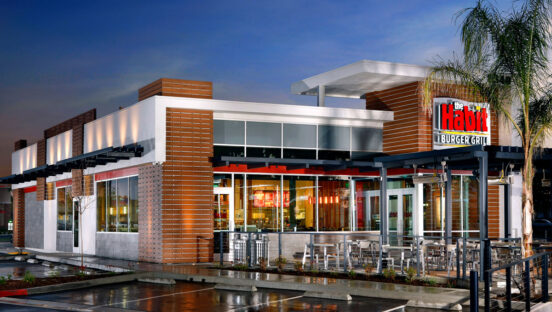Yum! Brands, already the biggest restaurant company in the world, is actively “scanning categories” in the M&A market, said CFO Chris Turner at the 13th Annual U.S. All Stars Conference in London.
The executive said having multiple brands with little overlap—KFC, Pizza Hut, Taco Bell, and The Habit Burger Grill—allows the company to serve a higher density of customers domestically and internationally. He noted that franchisees have recently reached out about growing further in the Yum! system, asking how they can take advantage of expansion outside their market. Turner attributed that demand to the improved company/franchisee relationship during COVID, including operators prioritizing customers and employees and Yum! providing royalty grace periods and extensions on capital requirements.
The building interest brings up the question, can the company bring more brands into the portfolio?
“I think the answer is yes,” Turner says.
Two months prior to COVID, Yum! announced it entered an agreement to purchase The Habit Burger for $375 million. At the time, the fast casual had 277 restaurants in 13 states and seven international stores. With the assistance of Yum!’s franchising infrastructure, the brand has opened a net of 61 restaurants since then, including a net of 55 in the U.S. The Habit believes it’s now on track to reach more than 2,000 locations in the U.S. For the first time in history, it’s refranchising stores in its home base of California to fund more corporate locations on the East Coast and Middle America.
“We’re only going to do [M&A] if there’s a thesis for how we are uniquely positioned to unlock growth, and that was what we saw with The Habit,” Turner said. “The Habit Burger Grill is only 60 percent burger. Forty percent of sales are things like the Ahi Tuna Sandwich and a range of salads. So it’s a little bit more trend-forward on many of the food products that it has. We saw a great brand that needed scale, needed help in franchising, and growth in international markets, and frankly the U.S.”
The transaction was Yum!’s first major M&A move since agreeing to sell Long John Silver’s and A&W in 2011 to two separate franchise groups.
Turner said the company’s next purchase would likely be the size of The Habit.
“We’re always scanning categories,” the CFO said. “We’re not going to do something that’s directly competitive with our current categories or franchisees, but a lot of interesting categories outside of that. We’re always looking at different spaces—Mediterranean food space is interesting. There’s a lot of interesting categories out there that we’re studying.”
Yum! has proven its ability to gain market share in the wake of COVID. In 2021, it had the best development year in restaurant history, boasting 4,180 gross openings and 3,057 on a net basis. The multi-brand platform debuted a new location every two hours on average and created more than 100,000 jobs. In total, Yum! oversees more than 53,000 units globally.
The company is set up as well as any to take the reins of an additional, complementary brand.
“Now there has to be shareholder value creation here,” Turner says. “I’d say last year, valuations were at a place where there wasn’t a lot of upside. Those may normalize over time. So we’re keeping our eyes open, but we’re only going to do it when it makes sense for our shareholders.”
The quick-service industry has been less active in acquisitions compared to 2021, when Burger King parent Restaurant Brands International bought Firehouse Subs for $1 billion and FAT Brands purchased multiple chains for nearly $900 million. This year, Butterfly Equity, the parent of Modern Market Eatery, agreed to buy the roughly 750-unit QDOBA for an undisclosed amount. Also, FAT Brands decided to buy Nestlé Toll House Café and convert locations into Great American Cookies, and rising frozen yogurt concept 16 Handles was acquired by a franchisee and YouTube personality.











